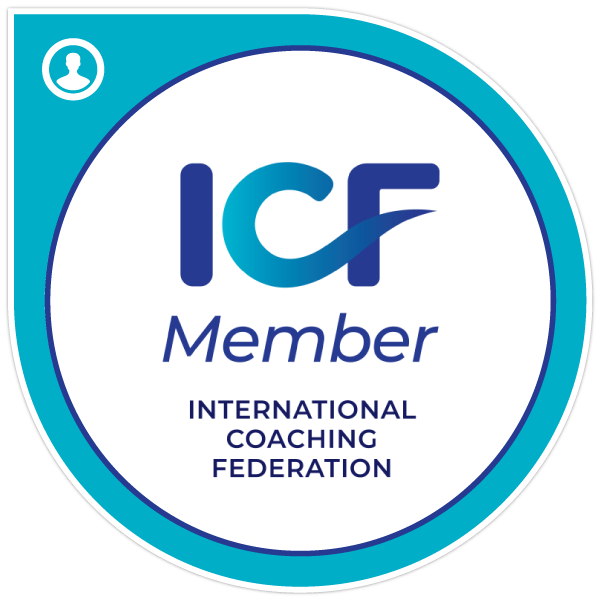Avoiding Employee Burnout
Rich Baron • May 11, 2023
The last few years have been incredibly stressful for many. On top of dealing with a global pandemic, we have also dealt with inflation, supply chain issues, the great resignation, the list goes on. During this time many of us continued to work — some from home with distractions or stressors we aren’t used to dealing with, or with smaller teams tackling work that usually took more minds to accomplish. That mix of stress and change both at the office and outside of it continues to be the perfect recipe for employee burnout.
Burnout is a state of emotional, mental, and or/physical exhaustion caused by excessive and ongoing stress. As leaders, it’s important to recognize that our team members may be experiencing employee burnout at higher rates than ever before — and just how draining that can be. Work-related stress doesn’t just disappear when you head home for the day.
According to Forbes, and Harvard Business Review, employee burnout can, and does result in the following issues:
- 23% more likely to visit the emergency room
- 13% lower confidence in performance.
- 63% more likely to take sick days.
- 50% less likely to discuss performance issues with their managers.
- 2 out of 3 employees experience burnout.
- Employee burnout costs and estimated $125 to $190B annually in health care spending in the US.
Stress-Related Substance Abuse
The National Council of Alcoholism and Drug Dependence reports that "One of the variables that ignite substance misuse is stress related to work. Stress is real. Exhaustion and burnout can happen. And perhaps, for some individuals, turning to alcohol or drugs seems like an immediate remedy.
This highlights the prevalence and impact of substance abuse because of employee burnout, particularly at higher levels of the organization. It shows that this issue is recognized and studied by various organizations and experts. The high number of search results for executive-level substance abuse suggests that this is a significant problem that needs to be addressed. If you google the term, “executive-level substance abuse,” you will get more than 44 million results.
Substance abuse not only affects an individual's health and well-being but also has negative consequences for the organization. It can lead to decreased productivity, increased absenteeism, and even legal issues such as theft or injury. Moreover, the loss of life due to substance abuse is a tragic outcome that should not be ignored.
Recognizing and addressing stress and burnout in the workplace is crucial to prevent substance abuse. Employers should prioritize creating a healthy work environment, promoting work-life balance, and providing resources and support for employees to manage stress effectively. This can include offering mental health resources, encouraging open communication about work-related issues, and implementing policies that prioritize employee well-being.
Substance abuse because of employee burnout is a serious issue that can have significant consequences for both individuals and organizations. Employers need to take proactive steps to address and prevent burnout, creating a work environment that supports employee well-being and helps to reduce stress-related substance misuse.
Leaders Must Recognize the Symptoms
Luckily, there are ways to avoid employee burnout before it can zap your team of energy and motivation, which in turn can result in poor organizational success. It can seep into personal lives, affecting overall well-being and productivity. Recognizing the signs and symptoms of burnout is crucial to address it and support our team members effectively.
The best way to avoid employee burnout is to recognize the early symptoms before it completely sets in. Everyone might express feeling burnout a little bit differently, but the main early symptoms are often the same:
Some common signs of burnout include:
1. Physical and emotional exhaustion: Feeling drained, tired, and lacking energy even after a good night's sleep. Emotional exhaustion can manifest as feeling detached, cynical, or apathetic towards work and personal relationships.
2. Decreased performance and productivity: Burnout can cause a decline in job performance, creativity, and problem-solving abilities. Tasks that used to be manageable may become overwhelming and take longer to complete.
3. Increased cynicism and negativity: Burnout can lead to a negative outlook on work and life in general. Team members may become cynical, pessimistic, and resentful towards their job, colleagues, or the organization.
4. Lack of motivation and engagement: Burnout can result in a loss of interest and enthusiasm for work. Employees may feel disengaged, unmotivated, and disconnected from their tasks and responsibilities.
5. Physical symptoms: Chronic stress can manifest in physical symptoms such as headaches, muscle tension, stomach issues, and difficulty sleeping. These physical manifestations can further exacerbate burnout and impact overall well-being.
Preventing and Addressing Burnout
If you’re lucky, you are at your current job for more than a paycheck — you’re there because you enjoy what you are doing and find a sense of purpose in your work. Hopefully, you’ve cultivated a team that feels similar.
As leaders, it's important to create a supportive and empathetic work environment to prevent and address burnout. Here are some strategies to consider:
1. Foster open communication: Encourage team members to share their challenges, concerns, and workload. Create a safe space for them to express their emotions and provide them with opportunities to ask for help or support.
2. Set realistic expectations: Ensure that workloads are manageable and deadlines are reasonable. Avoid excessive pressure and encourage a healthy work-life balance.
3. Promote self-care: Educate employees on the importance of self-care and provide resources for mental and physical well-being. Encourage regular breaks, exercise, and vacations to recharge.
4. Encourage autonomy and flexibility: Offer flexibility in work hours and remote work options if feasible. This allows employees to better manage their personal and professional responsibilities.
5. Recognize and appreciate achievements: Celebrate successes and acknowledge the hard work of your team members. Regularly provide positive feedback and recognition to boost morale and motivation.
6. Provide opportunities for growth and development: Support career development and offer opportunities for learning and growth. This helps employees stay engaged and motivated in their work.
7. Lead by example: As a leader, prioritize your well-being and manage your stress. Show vulnerability and share strategies that have helped you manage burnout.
By recognizing and addressing employee burnout, leaders can create a healthier and more productive work environment, ultimately benefiting both individuals and the organization as a whole.
Supporting Work-Life Balance
As many of us have switched to remote work in the last year, the lines around work-life balance have been blurred. Your employees may feel that since they work from home, they must be “on” all of the time, but that’s one of the quickest paths to burnout.
Here are a few suggestions for supporting work-life balance and helping employees combat burnout:
1. Set clear boundaries: Establish clear expectations regarding work hours and availability. Encourage your employees to disconnect and take time for themselves outside of work hours. Lead by example and avoid sending work-related emails or messages during non-working hours.
2. Encourage breaks and time off: Encourage your team members to take regular breaks throughout the day to recharge. Encourage them to use their vacation days and take time off when needed. Promote a culture that values rest and relaxation.
3. Offer flexibility: Remote work can provide flexibility in terms of when and where work gets done. Allow your employees to adapt their schedules to accommodate personal needs, such as attending to family obligations or pursuing hobbies. This flexibility can help them achieve a better work-life balance.
4. Foster open communication: Create a safe and supportive environment where employees feel comfortable discussing their workload, stress levels, and any challenges they may be facing. Regular check-ins and one-on-one meetings can provide an opportunity to address any concerns and provide support.
5. Provide resources for well-being: Offer resources and support for employee well-being, such as access to mental health resources, stress management programs, or wellness initiatives. Provide information on self-care strategies and techniques for managing burnout.
6. Recognize and appreciate your employees: Regularly acknowledge and appreciate the hard work and contributions of your team members. Recognizing their efforts can boost morale and motivation, while also showing that their well-being is important to you.
7. Encourage self-care and hobbies: Emphasize the importance of self-care and encourage employees to prioritize activities that bring them joy and relaxation outside of work. Support their interests and provide opportunities for team-building activities that align with personal hobbies.
By prioritizing work-life balance and supporting your employees' well-being, you can help prevent burnout and foster a healthy and productive work environment.
Wrapping Up
Finally, accepting help from friends, family, and employee assistance programs, as well as seeking support from psychologists, can greatly improve one's ability to manage work stress. By taking advantage of available resources and guidance, individuals can develop healthier coping mechanisms and prevent the negative effects of stress on their mental and emotional well-being. Taking proactive measures to address and manage work stress is essential for maintaining a healthy work-life balance and overall quality of life.
About the Author
Rich Baron holds the esteemed title of Master Certified Intelligent Leadership Executive Coach at John Mattone Global. With a wealth of expertise spanning over 25 years, he has excelled in various realms such as cultural transformation, operational leadership, executive positions, and coaching individuals from emerging leaders to CEOs. Rich co-hosts "Mainline Executive Coaching ACT," a podcast acknowledged by FeedSpot in 2023, and again in 2024 as the foremost Executive Coaching Podcast worldwide. This recognition is based on an evaluation of numerous podcasts on the internet, taking into account factors such as web traffic, social media followers, and timeliness. The podcast enjoys a substantial following in more than 60 countries and 550 cities across the globe.




